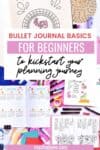Bullet Journal Basics For Beginners To Kickstart Your Planning Journey
If you’re looking for information on Bullet Journaling for beginners, you’re in the right place.
Bullet journaling is a great organizational tool that can help keep track of your life, from everyday tasks to long-term plans. This post will provide all the basics so that you can start creating meaningful and organized structures in your days.
If you’re uncertain about how Bullet Journaling works, we’ll take a close look at its key features so that soon enough, you can master this method and change your life.
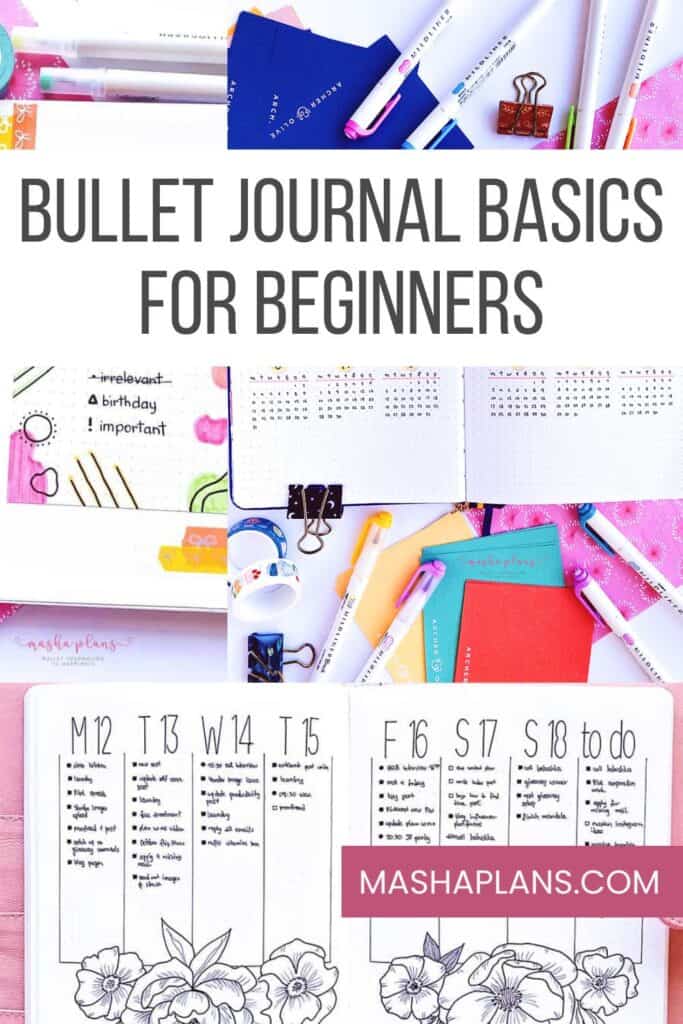
Bullet Journaling is a great way to organize your life and stay productive. It is an effective system for tracking tasks, goals, and events in one place. Whether it’s running errands, making plans with friends, or keeping track of upcoming deadlines – Bullet Journaling has you covered.
Using this method, you can stay organized by writing down all of your tasks in one place. You can also set reminders for yourself so that you won’t forget important events or important meetings. Additionally, Bullet Journaling allows users to keep track of their progress and set goals, so they can stay motivated to achieve them.
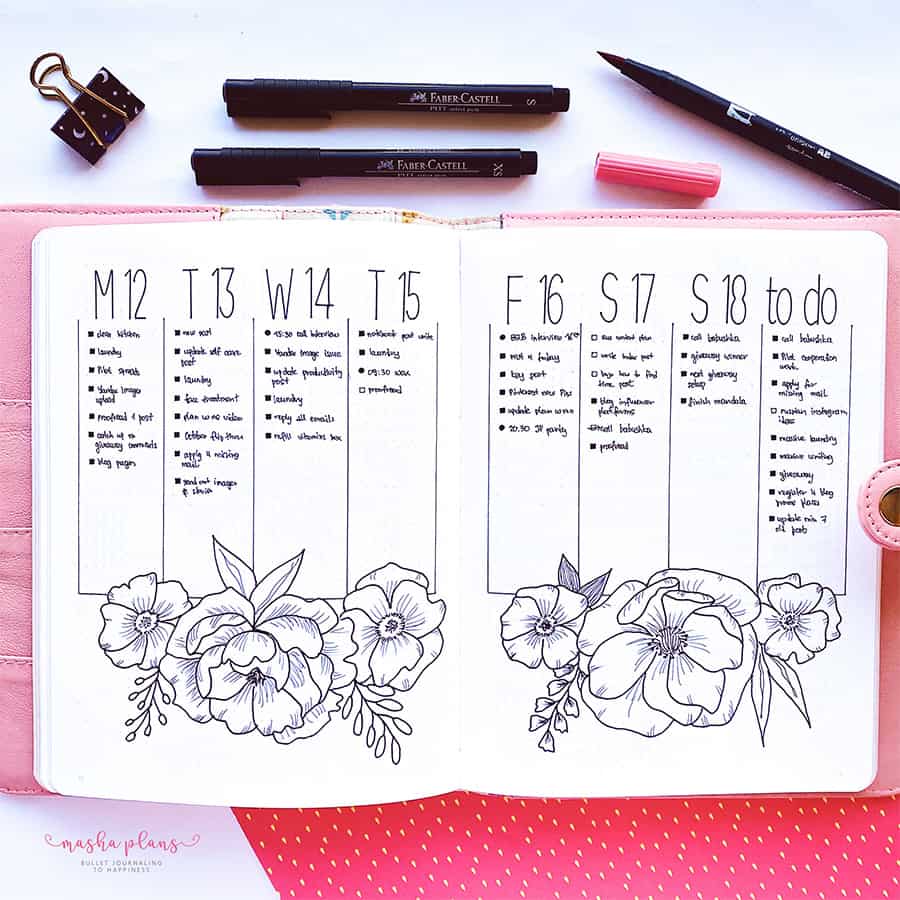
The beauty of Bullet Journaling is that it is customizable – you can use different colors, fonts, page designs, and stickers to make your journal as unique as possible.
Ok, enough of introduction, let’s talk about every element in detail. And be sure to scroll until the end to access a FREE course for beginners!
Understanding The Bullet Journal Method
The Bullet Journal method is based on the idea of using a journal or notebook to track and plan your day-to-day tasks. It’s incredibly versatile and can be adapted to fit any lifestyle or situation.
The goal of the Bullet Journal method is to help you create a system that works for you. You don’t have to stick to any specific format – the key is to find what works best for you and your lifestyle. The system encourages experimentation, so don’t be afraid to try something new if it feels right!
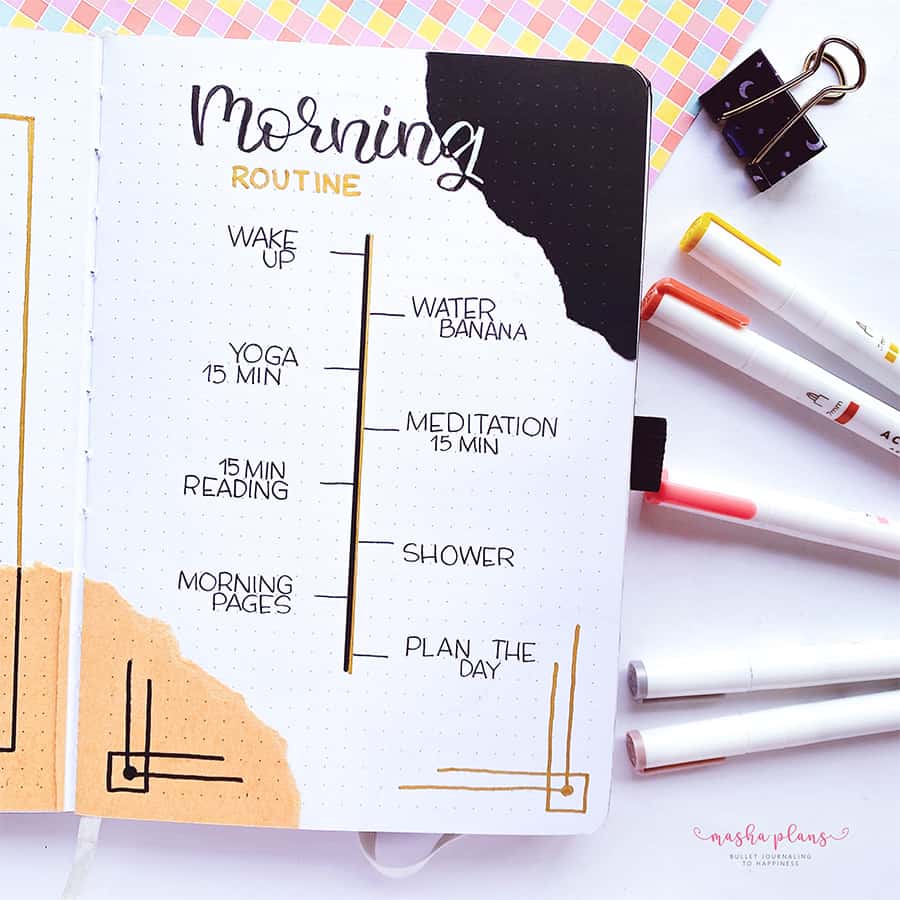
At the heart of the Bullet Journal System is Ryder Carroll’s core philosophy: “simplicity over complexity.” Instead of creating complex systems or tools to manage your life, Carroll encourages users to use only what they need for each task.
This means focusing on the fundamental tasks and activities that make up your day-to-day life, rather than trying to manage every single detail.
The Bullet Journal method is an incredibly powerful tool for managing all aspects of your life. From daily tasks to long-term projects, it can help keep you organized and on track.
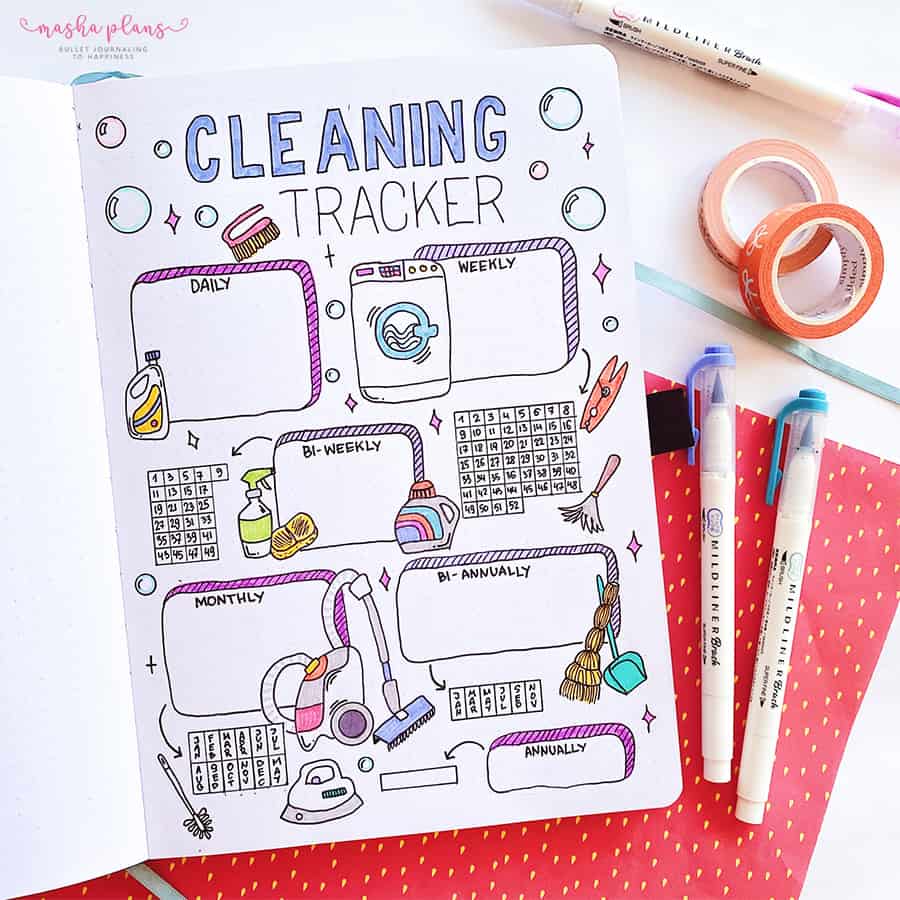
Here are a few main concepts that this system is based on:
- Spreads or collections.
Think of it like building a Lego castle, where each spread is a new building block that you add in to create a perfectly tailored journal. The options are limitless, and you can choose spreads that suit your needs, whether it’s a habit tracker, a mood log, or even a reading list. While there are certainly some core spreads to get you started, the real fun of Bullet Journaling is creating your own unique pages.
- Rapid Logging
It might sound like a confusing concept, but it’s actually the language your journal is written in. It’s a simple and efficient way to keep track of your thoughts and ideas without getting bogged down in lengthy paragraphs. Each entry is made up of short, condensed sentences that get straight to the point. Plus, it’s marked by a special symbol, so you can easily find what you’re looking for later on. Overall, rapid logging is a great tool to have in your journaling toolkit and can help you make the most of your journaling practice.
- Migration
This powerful tool is all about reviewing your progress and prioritizing what really matters. With each migration, you have the chance to assess your priorities and see what’s working and what’s not. When you use your Bullet Journal mindfully and intentionally, you can truly transform your life and achieve your wildest dreams.
- Reflections
By taking the time to reflect on your experiences and plan for a better future, you can build a more meaningful life. Reflection is key, and your Bullet Journal can help you with that. Each day, take a moment to think about what went well and what could use improvement. Then, use your journal to plan out how you can do better today.
This post may contain affiliate links. They will be of no extra expense for you, but I receive a small credit. Please see my Disclosure for more details. Thank you for supporting Masha Plans!
Bullet Journaling Supplies
There is, of course, a question of supplies you might need for creating a Bullet Journal, and it can get very overwhelming with all the options out there. But all you really need are a few essential supplies to get you going on your journaling journey.
Here are the must-haves:
- A notebook. This is the core of your Bullet Journal, and you’ll want to choose something that is the right size and have the right paper for you. Usually, a Bullet Journal is an A5-sized journal with dot grid paper, but you should choose whatever works for you.
- A pen. Yes, all you really need is just one good pen to draw your pages and write entries. But of course, you’re free to experiment and try out different pens and markers to add a bit of color and a custom look to your pages.
- A ruler. Since you’ll be the one creating pages in your journal, you’ll probably need a ruler unless you like doing things freehand. It would also be helpful if your ruler had some other extra elements to it as well, just so you can add variety to your pages.
And that’s it! Believe it or not, this is all you really need to start a Bullet Journal.
But if you want to get some more supplies, it can easily get overwhelming with all the brands and options out there. Here are a few tips to help get you started:
- Make sure that your notebook is large enough to accommodate all of your journal entries and layout ideas.
- Choose pens with archival-quality ink so that your entries last longer.
- Look for markers with minimal bleed and non-toxic colors to protect your pages.
- Consider investing in stencils if you want to add custom illustrations or text.
- Try experimenting with different sticker designs and washi tape to make your pages stand out.
I can talk about supplies for hours and have a lot of information and recommendations, be sure to check the end of the post for more.
Meanwhile, let’s dive into the next step of setting up a Bullet Journal.
Setting Up Your First Bullet Journal
To get started, let’s take a look at the key components of a typical Bullet Journal.
Ans always remember that even though these are so-called must-have pages, it’s up to you to decide if you want to use them and if they are beneficial to your personal planning style.
Key
Creating a personalized key is an essential part of Bullet Journaling. A key helps you quickly identify symbols you’ll use for events, tasks, notes—anything else that requires categorization or organization.
When it comes to creating a personalized key, the possibilities are endless; however, there are some common Bullet Journaling symbols that can be a good starting point.
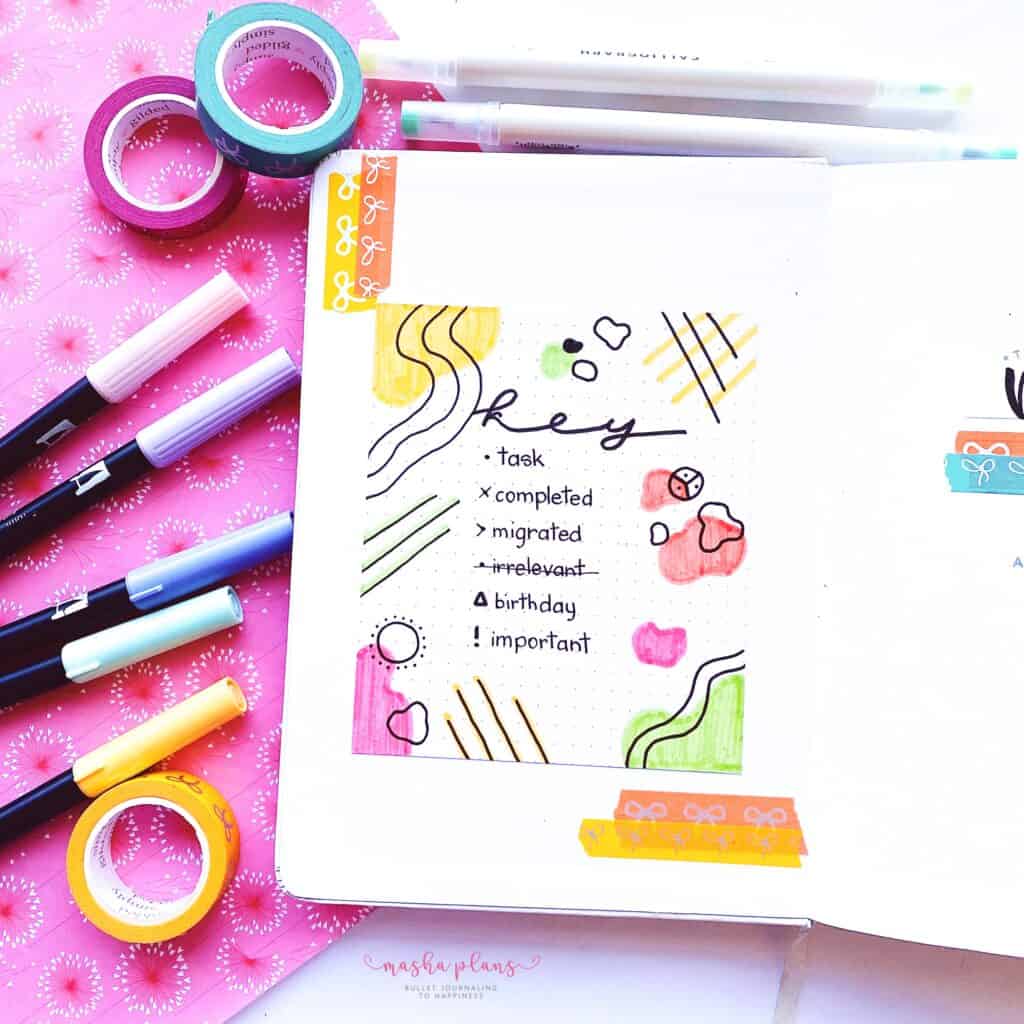
- Tasks: Use an open circle (•) to denote tasks that still need to be completed.
- Events: Use an open circle with a line through it (o) to denote events or appointments.
- Notes: Use a dash (-) to denote notes that you want to save for later.
- Ideas: Use a star (*) to denote ideas that you may want to come back to.
- Priorities: Use an exclamation point (!) to denote items that are particularly important.
Index
The index is where you list every page in your journal and mark off which pages are filled with content. This helps you quickly find what you’re looking for without having to flip through all your pages.
Future Log
The future log is a section of your journal where you can keep track of events and tasks that need to be done in the coming months. It’s a great way to keep an overview of what needs to be done and when it needs to be done.
You usually write here things that are far along the future, like birthdays, anniversaries, vacations, and such.
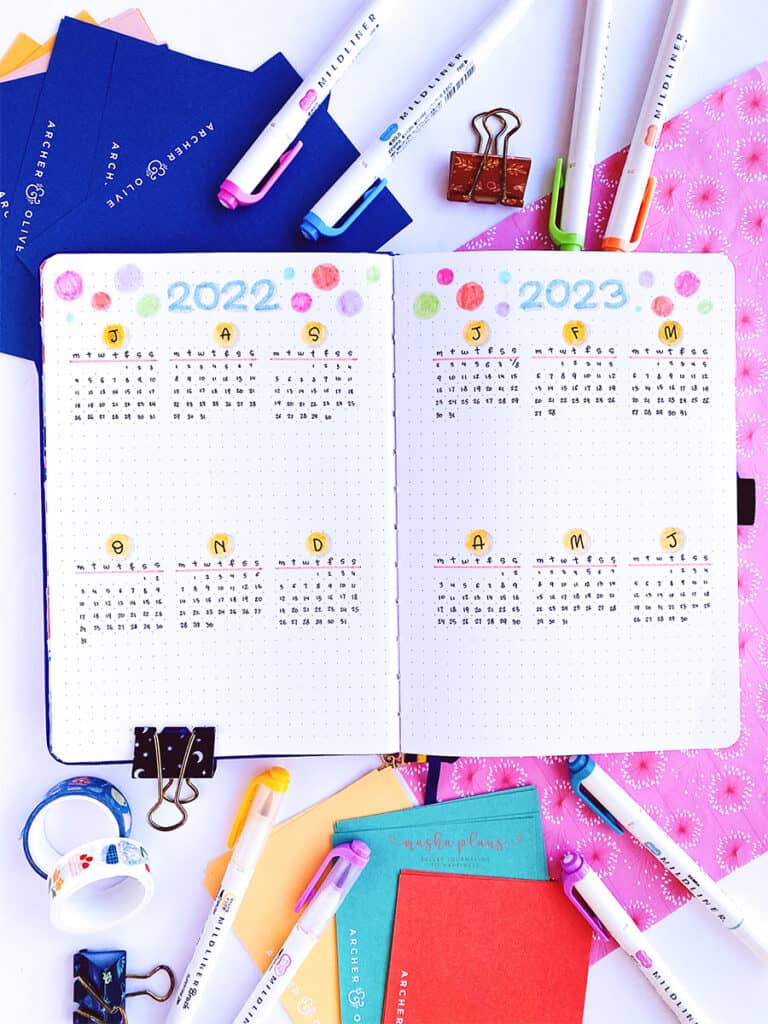
Monthly Log
The monthly log is where you can list your tasks and events for the month. This helps with planning and organizing how you want to spend your time in the coming weeks.
It also often comes with a monthly to-do list, which is very useful for organizing your tasks and offloading them from your head.
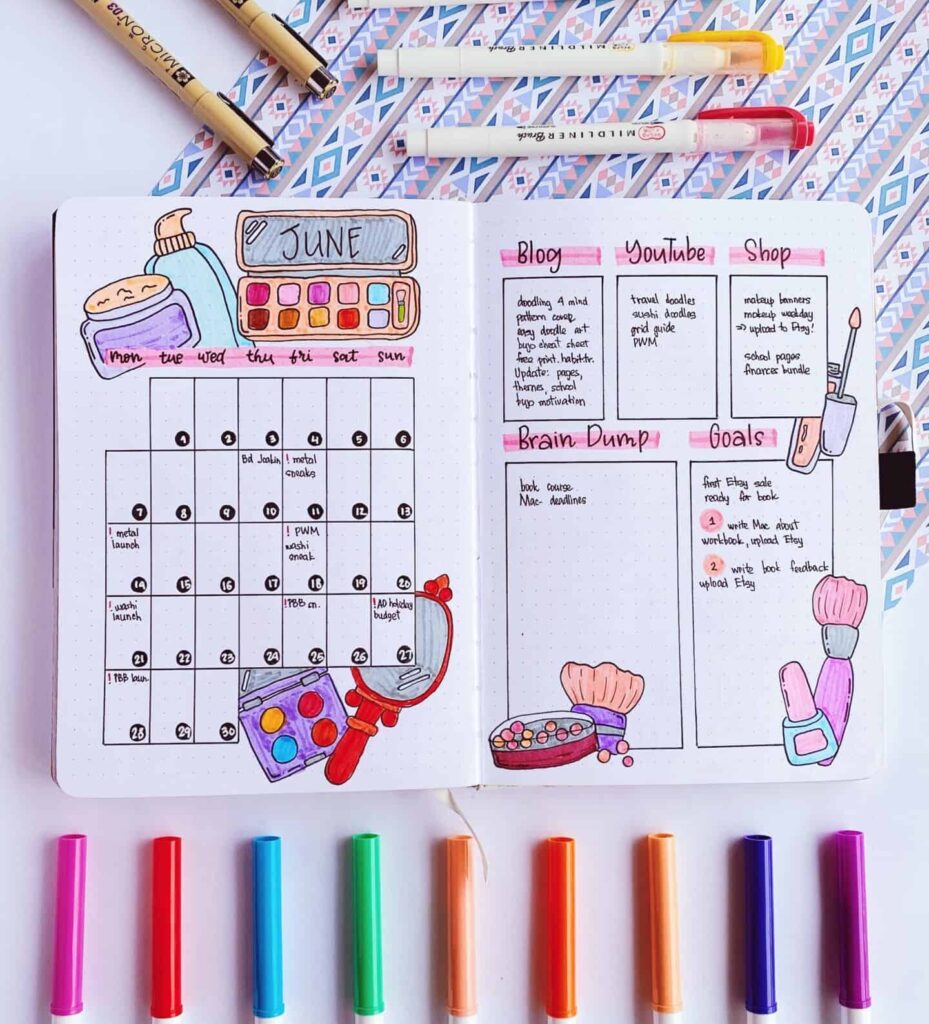
Daily \ Weekly Log
The daily log is where you can keep track of your daily to-dos and events. This is where you can list out and prioritize tasks that need to be done on a day-to-day basis.
A weekly log is the same, but it allows you to plan week by week rather than day by day. I usually find that a better way to plan since you still get daily boxes to plan for each day, but you can see a whole week at a glance as well.
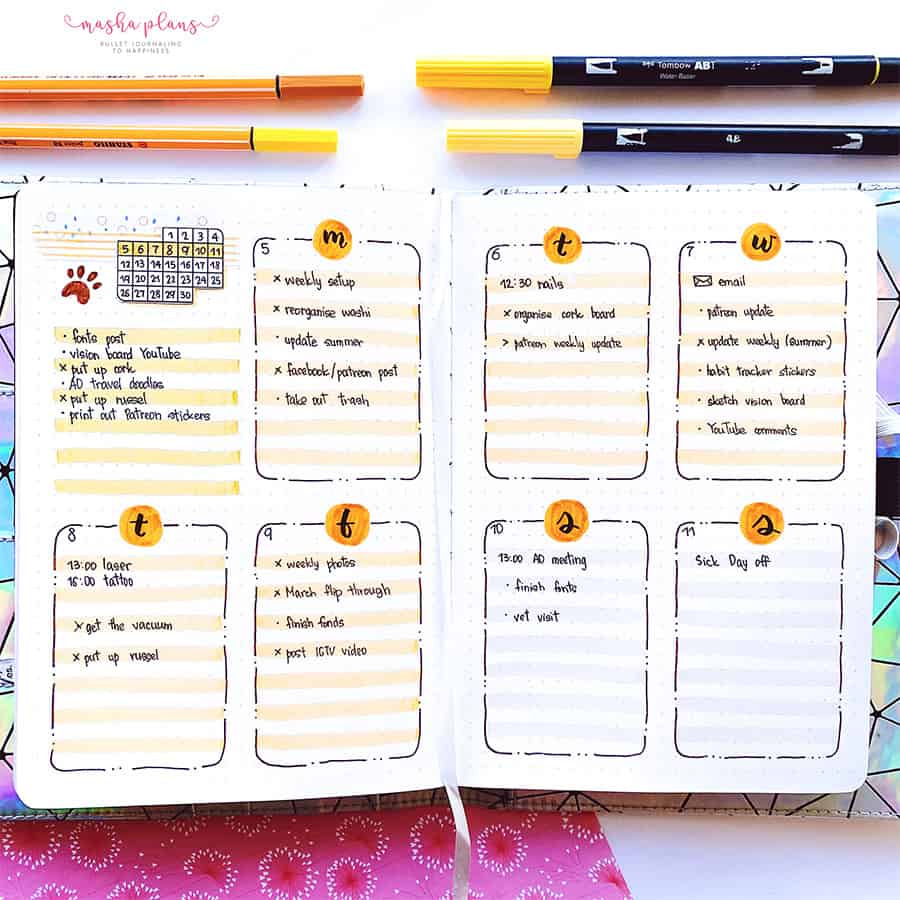
Making the Most Out of Your Bullet Journal
Once you’ve got your Bullet Journal set up, make the most out of it by staying organized and on top of tasks and events.
Here are some tips to help you out:
- Create lists with deadlines so that you can easily prioritize what needs to be done first.
- Color code events and tasks by importance to make sure the most important things get done.
- Make use of symbols and shortcuts — for example, a checkmark for tasks that have been completed or an exclamation mark for urgent items.
- Use your Bullet Journal as a place to jot down ideas or plan out upcoming projects.
- Use it as a way to look back and reflect on what you’ve accomplished over the past week or month.
With these tips, your Bullet Journal can be an essential tool for staying organized and keeping track of tasks, events, and ideas in your life in no time.
Bullet Journal Tips For Beginners
One of the most important things to keep in mind when getting started with bullet journaling is consistency. It’s easy to get overwhelmed with all the different ways you can customize your Bullet Journal, and it’s also easy to get discouraged if something doesn’t turn out the way you expected.
That being said, don’t be afraid to experiment and make your journal unique! You can always start with a few basics and build up as you go.
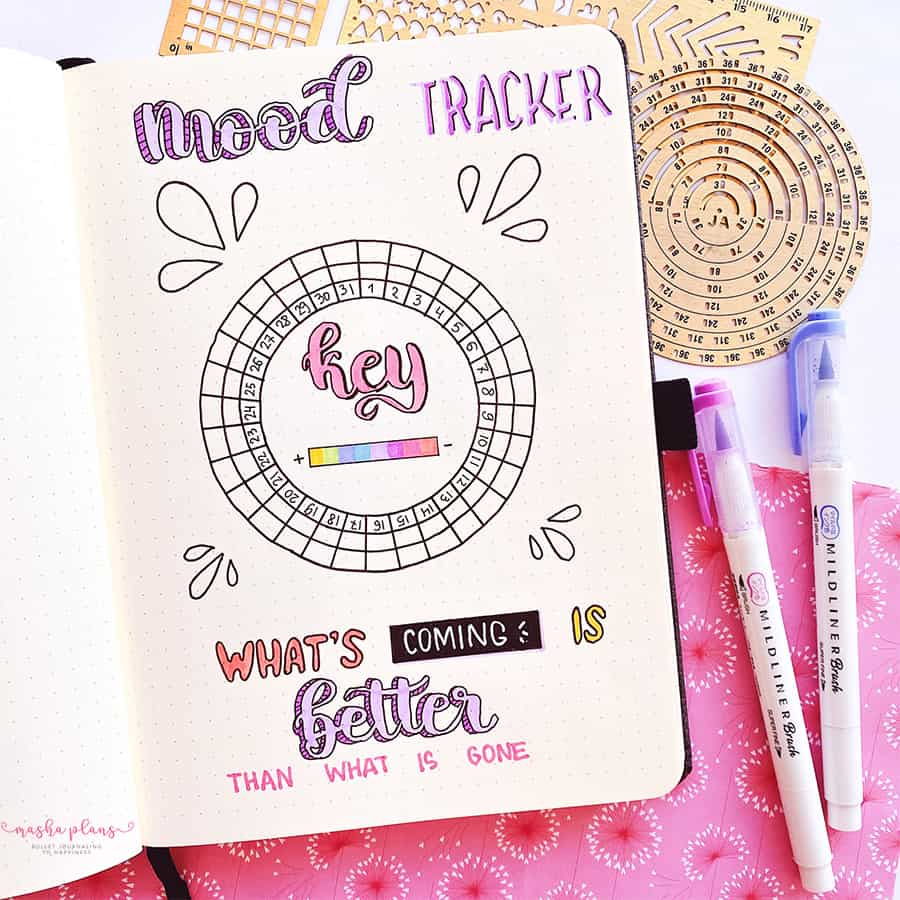
To help you deal with all the difficulties of starting a new habit and learning about a new planning method, here are a few tips:
- Start small and don’t overwhelm yourself – it’s better to start with fewer pages than more. Stick to the must-have pages we discussed here and try new pages as you go, maybe one new page a month.
- Set aside some time to brainstorm ideas and decide what should go in your Bullet Journal. Think about layout, colors, and any other elements that you would like to add. Creative elements definitely make it more fun and entertaining. But even if you don’t want to make it artistic, you should brainstorm different ways to set up pages because what works for you might be significantly different from what others usually use.
- Research some of the popular Bullet Journaling pages so you can get an idea of what works best for you and how you want to organize your journal. There are a few resources at the end of the post to help you with that.
- Don’t be discouraged if something doesn’t turn out quite as expected – it’s all part of the process. Have fun with it, and understand it’s just one more step in your journey.
Free Bullet Journal Course
Do you want to dive deeper into each of these pages and have a fully functional Bullet Journal? I’ve got you covered.
Join my free course on Bullet Journaling for beginners! Sign up in the form below, and once you confirm your subscription, all the sign-up information will be on the way to your inbox.
More Resources
This post just scratched the surface; there is so much more information for beginners! But let’s keep it basic so as not to overwhelm you.
Check out these posts next:
- Bullet Journaling Terms Every Beginner Should Know
- 5 Must-Have Page Ideas For Your Bullet Journal
- 11 Page Ideas For Beginners
- The Best Bullet Journal Supplies For Any Artistic Level
Hope this post was interesting. If you find it so, please share! If you enjoy my content and want to show your appreciation, please consider supporting me with a cup of coffee.
And remember: Keep Bullet Journaling, and Don’t Be A Blob!


